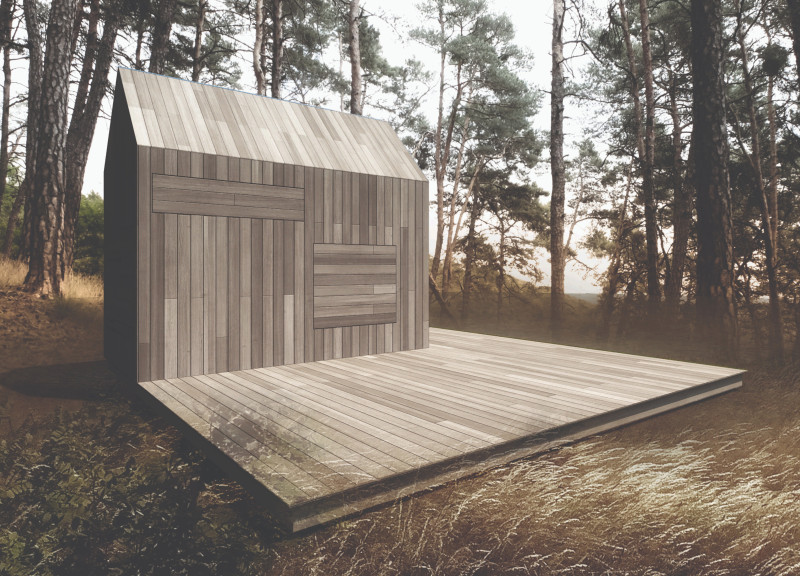5 key facts about this project
Unique Structural Design and Material Selection
What distinguishes the Amber Road Trekking Cabins from conventional lodging structures is their lightweight wooden skeleton, which allows for quick assembly and mobility. The double-skinned roof is engineered for effective insulation, incorporating treated wooden boards aimed at durability. The unique modularity of the design means that each cabin can be adapted based on specific user needs and environmental conditions, offering flexibility that is not commonly found in standard cabin designs.
The architecture leverages natural wood to create a cohesive look with the landscape, ensuring the cabins are both functional living spaces and sculptural elements in the forest. The details of the project include features such as metal gutters and platings that enhance the structure's longevity while keeping aesthetic considerations in mind. This thoughtful integration of materials exemplifies a commitment to not just building structures, but creating enduring components of the landscape.
Integration with the Environment
The Amber Road Trekking Cabins are designed with an emphasis on user experience and environmental interaction. The architectural designs promote a seamless transition between indoor and outdoor spaces, allowing occupants to engage directly with their natural surroundings. Large openings and easily operable facades create opportunities for airflow and natural light, which enhance the living experience.
The project utilizes sustainable construction principles, focused on reducing the ecological footprint while maximizing usability. The cabins embody a philosophy of simplicity without sacrificing comfort, encouraging users to immerse themselves in the hiking experience. The careful consideration of site-specific conditions provides an added layer of adaptability, making these cabins suitable for various climates and landscapes.
To explore this project further, examine the architectural plans, sections, and details that illustrate the innovative design approaches employed in the Amber Road Trekking Cabins. By reviewing these elements, readers can gain deeper insights into the architectural ideas and execution behind this unique project.


























